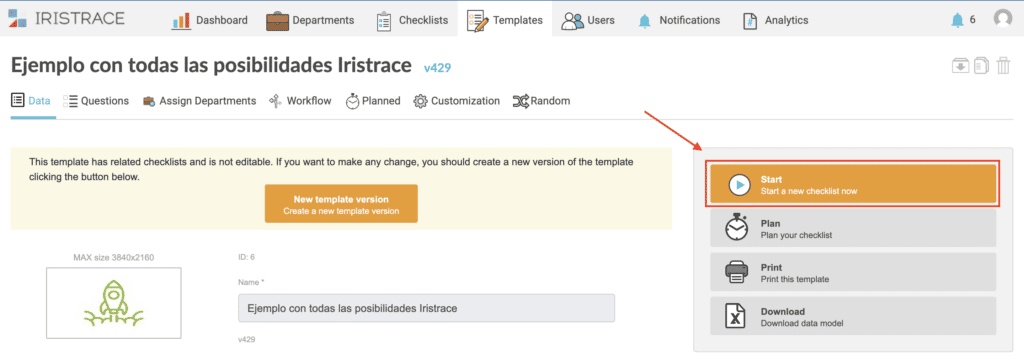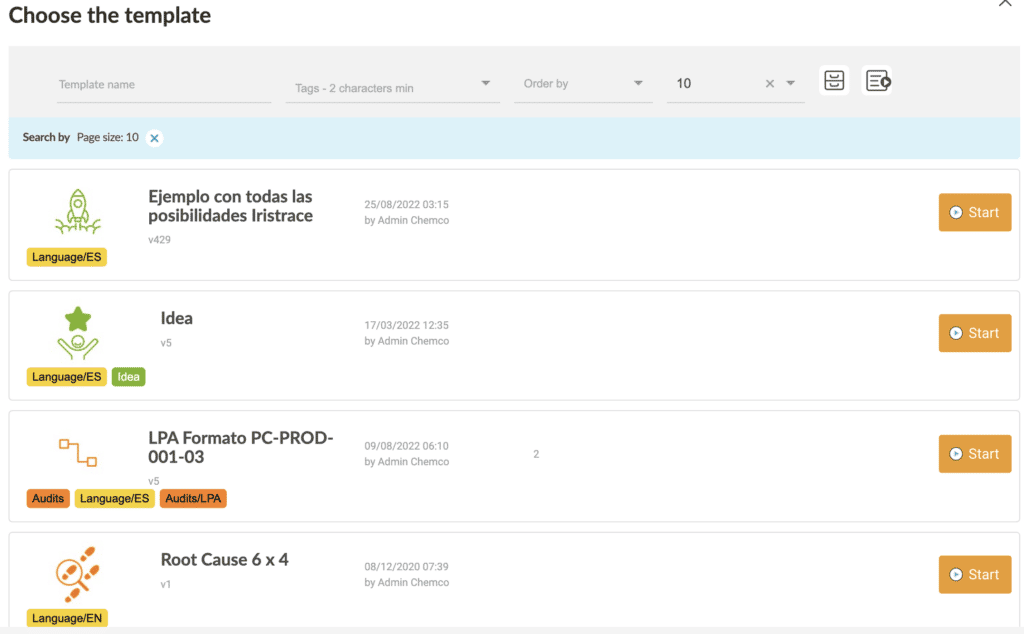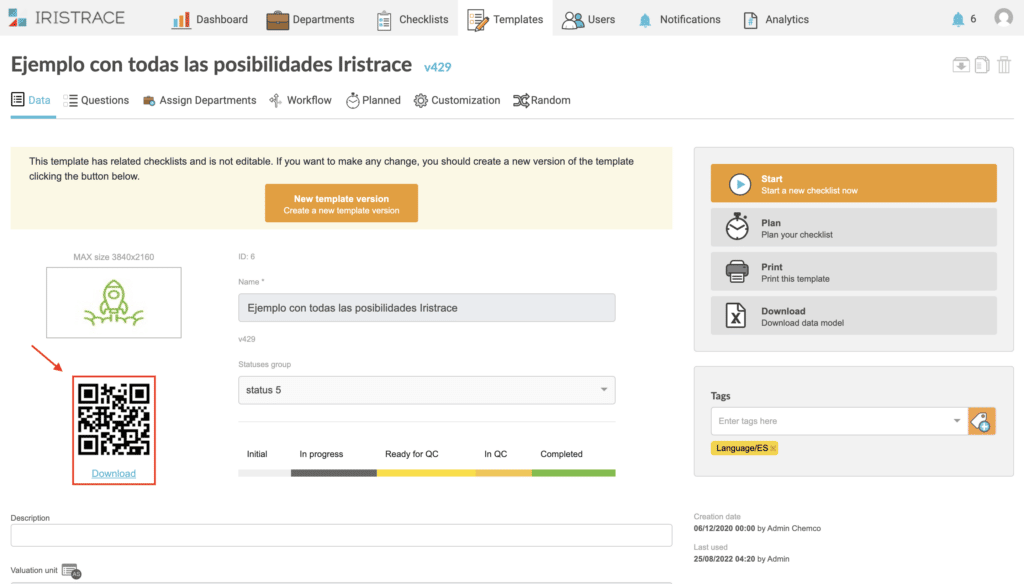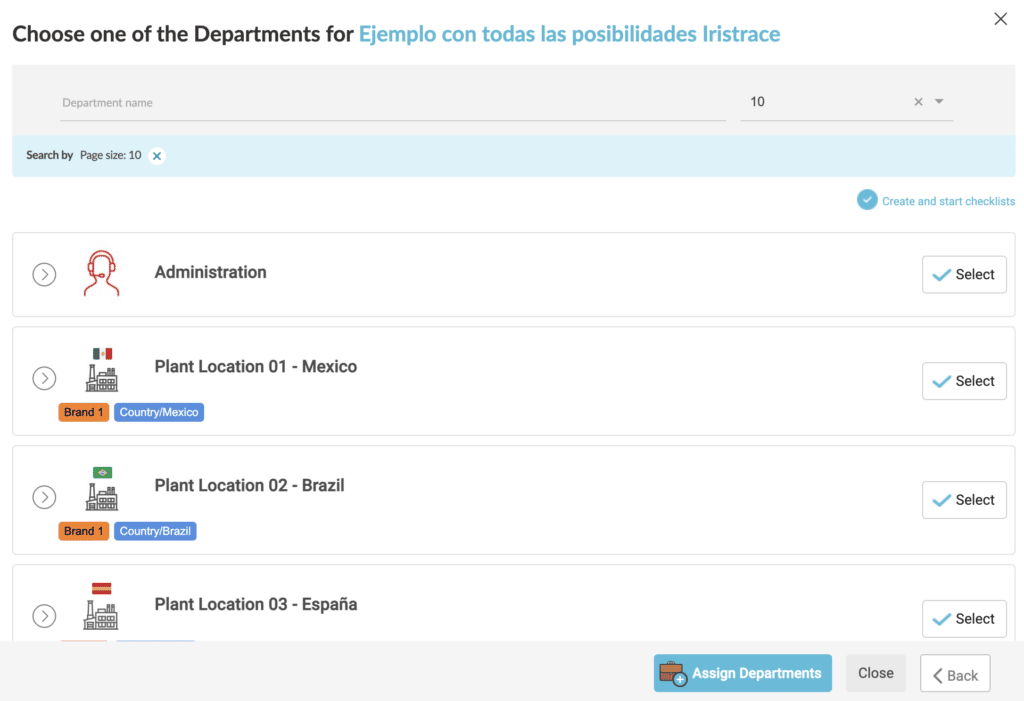Learn how to create, answer and operate a checklist with the web version of Iristrace. Remember that on a mobile terminal or tablet you also have an app to improve your user experience.
1. Create a checklist #
Once you have your templates set up, there are several ways to create a checklist.
1.1. From the list of templates in the section “Templates”. #
From the “Templates” tab by clicking on the “Create” button.

1.2. From the template details in the section “Templates”. #
From the “Templates” tab, click on the name of the template you want to start and once inside click on the “Start” button.

1.3. From the “Checklists” section #
From the “Checklists” tab, clicking on “Create”, choose the template and the department where you want to complete the checklist and start answering.


1.4. Scan a QR code #
There is also the possibility to scan a QR to start a checklist.
1.4.1. Scan the code with your device #
This QR code is associated with a template and can be placed in the locations where the checklist is to be made.

1.4.2. Select template #
Once you start the action of creating a checklist, a window will open with the list of existing templates and you can choose the one you need.
1.4.3. Select the department #
Next, you will need to choose the department you want to assign it to.

If the account has only one department, Iristrace will automatically assign the chosen template to the department.
In the same way, if there is only one template, when clicking on “New checklist” the template will be selected giving way to the following department selection screen.
2. Answer a checklist #
When you start a checklist you have the possibility to answer the questions according to the structure defined in the original template.
Additionally, each question has the possibility to have an attachment:
- One comment
- An image
- One file
- A manual immediate alert, which will cause an impact the moment it is pressed.
- Create an action plan
3. State flow of a checklist #
In Iristrace the flow of the states that a checklist can go through is determined by the group of states that the original template has configured.
By default, there are two groups of states that can be associated to a template.
3.1. Group 3 states #
Initial #
The checklist has been planned, but has not been started.
In Progress #
The checklist has been started and is in the process of being answered.
Completed #
The checklist has been completed and finalized.
3.2. Group 5 states #
Initial #
The checklist has been planned, but has not been started.
In Progress #
The checklist has been started and is in the process of being answered.
Ready for review #
The checklist data collection is complete and you are ready for a supervisor to review the checklist result.
Under Review #
The checklist is being reviewed by the person in charge.
Completed #
The checklist has been completed and finalized.
4. Close a checklist #
When finalizing a checklist there are two options that you can choose, depending on the group of states that you have configured.
4.1. End for review #
You finalize it, but allow the supervisor or manager to review it and finalize the report.
4.2. Exit checklist #
It is the user himself who finalizes and completes the checklist.
